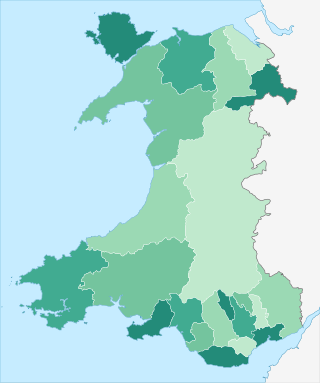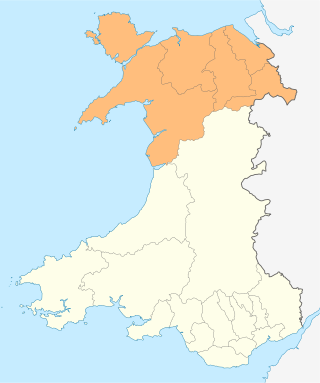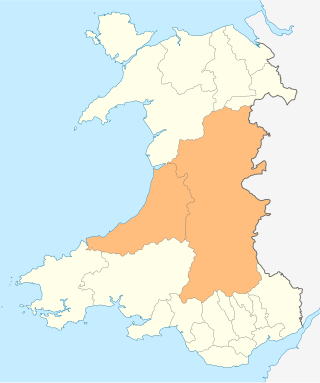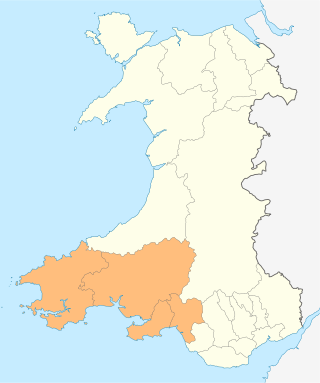Local government in Wales is primarily undertaken by the twenty-two principal councils. The councils are unitary authorities, meaning they are responsible for providing local government services within their principal area, including education, social work, environmental protection, and most highway maintenance. The principal areas are divided into communities, most of which have an elected community council. The services provided by community councils vary, but they will typically maintain public spaces and facilities. Local councils in Wales are elected; the most recent local elections in Wales took place in 2022, and the next are due to take place in 2027.

The principal areas of Wales, comprising the counties andcounty boroughs of Wales, are a form of subdivision in Wales. There are currently 22 principal areas in Wales, and they were established in 1996. They are a single-tier form of local government, each governed by a principal council. They replaced the previous two-tier system of eight counties and 37 districts that were in place in Wales from 1974 to 1996.

Wrexham County Borough is a county borough, with city status, in the north-east of Wales. It borders the English ceremonial counties of Cheshire and Shropshire to the east and south-east respectively along the England–Wales border, Powys to the south-west, Denbighshire to the west and Flintshire to the north-west. The city of Wrexham is the administrative centre. The county borough is part of the preserved county of Clwyd.

North Wales is a region of Wales, encompassing its northernmost areas. It borders mid Wales to the south, England to the east, and the Irish Sea to the north and west. The area is highly mountainous and rural, with Snowdonia National Park and the Clwydian Range and Dee Valley, known for its mountains, waterfalls and trails, wholly within the region. Its population is concentrated in the north-east and northern coastal areas, with significant Welsh-speaking populations in its western and rural areas. North Wales is imprecisely defined, lacking any exact definition or administrative structure. It is commonly defined administratively as its six most northern principal areas, but other definitions exist, with Montgomeryshire historically considered to be part of the region.

Gwynedd Council, which calls itself by its Welsh name Cyngor Gwynedd, is the governing body for the county of Gwynedd, one of the principal areas of Wales. The council administrates internally using the Welsh language.

Denbighshire County Council is the unitary local authority for the county of Denbighshire, one of the principal areas of Wales. The council is based at County Hall in Ruthin.
The subdivisions of Wales constitute a hierarchy of administrative divisions and non-administrative ceremonial areas.
A Welsh Government sponsored body (WGSB) is a non-departmental public body directly funded by the Welsh Government. Under the Government of Wales Act 1998 the bodies were sponsored by the National Assembly for Wales and were known as an Assembly sponsored public body, and this was changed by the Schedule 3 of the Wales Act 2017 which amended the Government of Wales Act 2006.
The Taith Joint Board is a legally constituted joint committee of the six north Wales county authorities for the purpose of developing and implementing actions and strategies for transport in north Wales. It was formally established on 31 March 2004. Prior to that date it was an informal consortium of the six north Wales counties. Taith had originally been the Transport Sub-Committee of the North Wales Economic Forum and adopted the "Taith" name and style in 2002. Although Gwynedd is a member of Taith, the former Meirionnydd district of Gwynedd is included in the mid Wales "TraCC" transport consortium which covers Powys and Ceredigion also. The boundaries of the transport consortiums in Wales were formalised by "The Regional Transport Planning (Wales) Order" of the National Assembly for Wales in 2006. Apart from Taith and TraCC there are two other transport consortiums in Wales - SEWTA and SWWITCH

In Wales, a trunk road agent,, is a partnership between two or more county and/or county borough councils for the purposes of managing, maintaining, and improving the network of trunk roads in Wales in their respective areas on behalf of the Welsh Government.

A combined authority (CA) is a type of local government institution introduced in England outside Greater London by the Local Democracy, Economic Development and Construction Act 2009. CAs are created voluntarily and allow a group of local authorities to pool appropriate responsibility and receive certain devolved functions from central government in order to deliver transport and economic policy more effectively over a wider area. In areas where local government is two-tier, both must participate in the combined authority.

North East Wales is an area or region of Wales, commonly defined as a grouping of the principal areas of Denbighshire, Flintshire, and Wrexham County Borough in the north-east of the country. These principal areas comprise most of the former administrative county of Clwyd. It is bordered by Conwy, and Gwynedd, in North West Wales to the west, Powys, in Mid Wales to the south, the English counties of Cheshire, and Shropshire to the east, and the Irish Sea, and Dee estuary to the north. It is the more urban, densely populated, and industrial part of the north Wales geographic region, centred on the city of Wrexham and the towns of Rhyl and Prestatyn, and the conurbation of Deeside. The region's close links with North West England in general and Merseyside in particular are crucial to the region's economy. The Clwydian Range and Dee Valley Area of Outstanding Natural Beauty is located in the region. Other attractions include historical buildings such as Chirk Castle, and Erddig in Wrexham, valley towns such as Corwen and Llangollen, and the Pontcysyllte Aqueduct and Canal World Heritage Site.

The North and Mid Wales Trunk Road Agent is one of the two trunk road agents in Wales. It is responsible for managing trunk roads in North and Mid Wales on behalf of the Welsh Government. A merger of two trunk road agencies, established separately on 1 April 2006, the North Wales Trunk Road Agency and Mid Wales Trunk Road Agency, the two bodies were merged and renamed to its current name on 1 April 2012. The agent manages trunk roads in eight principal areas of the north and mid regions of Wales: the respective principal councils of Anglesey, Ceredigion, Conwy, Denbighshire, Flintshire, Gwynedd, Powys, and Wrexham. The remainder of Wales is managed by the South Wales Trunk Road Agent.

Wales has traditionally been divided into a number of ambiguous and ill-defined areas described as regions, reflecting historical, geographical, administrative, cultural and electoral boundaries within the country. Presently, the most common form of division of Wales into "regions" has been using cardinal and intercardinal references: north or south-west for example. None of the variously described "regions" have official status or defined boundaries; neither is there a fixed number of regions. Various organisations use different regions and combinations of regions for their individual purposes. This includes devolved institutions, such as Visit Wales, Natural Resources Wales, and the Welsh Government itself, using different sets of Wales' regions. Wales is most commonly sub-divided into between two and four regions, with a North–South divide, and North, Mid, South East and South West division being common. This article lists the various terms applied to be the "regions of Wales" and the regions used by various organisations.

Ambition North Wales is a joint committee and decision-making body overseeing the North Wales Growth Deal, a regional economic growth deal covering the North Wales region. It is a partnership between the six local authorities of Conwy County Borough, Denbighshire, Flintshire, Gwynedd, Isle of Anglesey, and Wrexham County Borough, and other local partners in the region, including Bangor University, Wrexham University, Grŵp Llandrillo Menai, Coleg Cambria, and various private sector representatives.

Regional economy in Wales is centred on four regional economic boards in Wales. Each board oversees a city or growth deal, signed between 2016 and 2022, lasting 10–15 years. Two of the deals are city deals signed and proposed by their respective economic boards, and their areas are described as "city regions"; the Cardiff Capital Region and Swansea Bay City Region. Whereas in North Wales, the North Wales Economic Ambition Board negotiated a North Wales growth deal signed in 2020, and in Mid Wales, the Growing Mid Wales Partnership, led negotiations for a Mid Wales growth deal signed in 2022. The programmes are based on the City deal and Growth deal initiatives set up by the Coalition UK Government in 2012, to promote the decentralisation of the UK economy, by stimulating local economic growth.

A Corporate Joint Committee is a type of local government institution introduced in Wales by the Local Government and Elections (Wales) Act 2021.

The Mid Wales Corporate Joint Committee is the Corporate Joint Committee for Mid Wales that was established in April 2021 by statutory instruments made under the Local Government and Elections (Wales) Act 2021. It is an indirectly elected body made up of leaders of principal councils and national park authorities in the region.

The South West Wales Corporate Joint Committee is the Corporate Joint Committee for South West Wales that was established in April 2021 by statutory instruments made under the Local Government and Elections (Wales) Act 2021. It is an indirectly elected body made up of leaders of principal councils and national park authorities in the region.

The South East Wales Corporate Joint Committee is the Corporate Joint Committee for South East Wales that was established in April 2021 by statutory instruments made under the Local Government and Elections (Wales) Act 2021. It is an indirectly elected body made up of leaders of principal councils and national park authorities in the region.

















